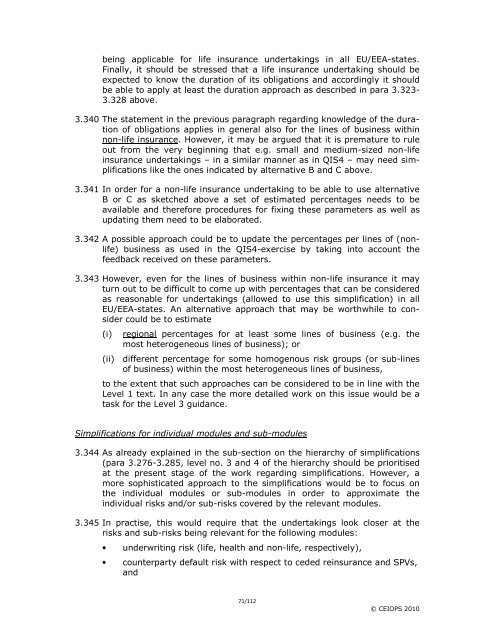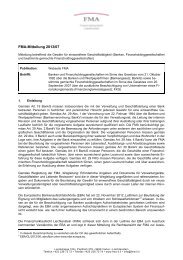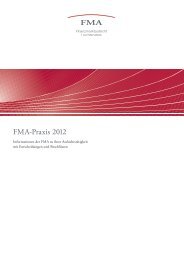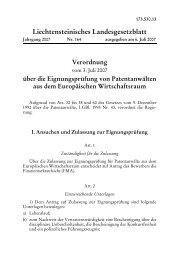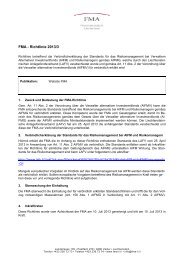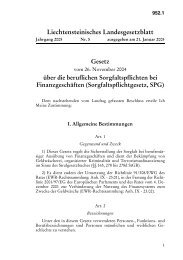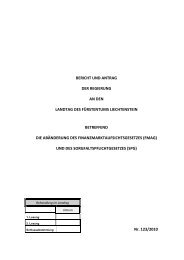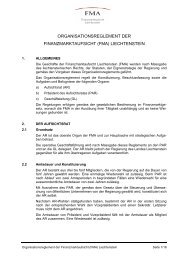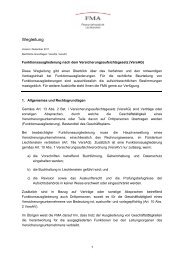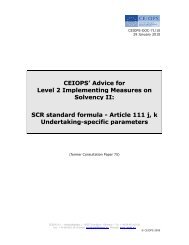CEIOPS' Advice for Level 2 Implementing ... - EIOPA - Europa
CEIOPS' Advice for Level 2 Implementing ... - EIOPA - Europa
CEIOPS' Advice for Level 2 Implementing ... - EIOPA - Europa
Create successful ePaper yourself
Turn your PDF publications into a flip-book with our unique Google optimized e-Paper software.
eing applicable <strong>for</strong> life insurance undertakings in all EU/EEA-states.<br />
Finally, it should be stressed that a life insurance undertaking should be<br />
expected to know the duration of its obligations and accordingly it should<br />
be able to apply at least the duration approach as described in para 3.323-<br />
3.328 above.<br />
3.340 The statement in the previous paragraph regarding knowledge of the duration<br />
of obligations applies in general also <strong>for</strong> the lines of business within<br />
non-life insurance. However, it may be argued that it is premature to rule<br />
out from the very beginning that e.g. small and medium-sized non-life<br />
insurance undertakings – in a similar manner as in QIS4 – may need simplifications<br />
like the ones indicated by alternative B and C above.<br />
3.341 In order <strong>for</strong> a non-life insurance undertaking to be able to use alternative<br />
B or C as sketched above a set of estimated percentages needs to be<br />
available and there<strong>for</strong>e procedures <strong>for</strong> fixing these parameters as well as<br />
updating them need to be elaborated.<br />
3.342 A possible approach could be to update the percentages per lines of (nonlife)<br />
business as used in the QIS4-exercise by taking into account the<br />
feedback received on these parameters.<br />
3.343 However, even <strong>for</strong> the lines of business within non-life insurance it may<br />
turn out to be difficult to come up with percentages that can be considered<br />
as reasonable <strong>for</strong> undertakings (allowed to use this simplification) in all<br />
EU/EEA-states. An alternative approach that may be worthwhile to consider<br />
could be to estimate<br />
(i) regional percentages <strong>for</strong> at least some lines of business (e.g. the<br />
most heterogeneous lines of business); or<br />
(ii) different percentage <strong>for</strong> some homogenous risk groups (or sub-lines<br />
of business) within the most heterogeneous lines of business,<br />
to the extent that such approaches can be considered to be in line with the<br />
<strong>Level</strong> 1 text. In any case the more detailed work on this issue would be a<br />
task <strong>for</strong> the <strong>Level</strong> 3 guidance.<br />
Simplifications <strong>for</strong> individual modules and sub-modules<br />
3.344 As already explained in the sub-section on the hierarchy of simplifications<br />
(para 3.276-3.285, level no. 3 and 4 of the hierarchy should be prioritised<br />
at the present stage of the work regarding simplifications. However, a<br />
more sophisticated approach to the simplifications would be to focus on<br />
the individual modules or sub-modules in order to approximate the<br />
individual risks and/or sub-risks covered by the relevant modules.<br />
3.345 In practise, this would require that the undertakings look closer at the<br />
risks and sub-risks being relevant <strong>for</strong> the following modules:<br />
• underwriting risk (life, health and non-life, respectively),<br />
• counterparty default risk with respect to ceded reinsurance and SPVs,<br />
and<br />
71/112<br />
© CEIOPS 2010


